Toll Free: 800.328.8368
Phone: 512.328.5221
Featured Leader
Max Breckenridge

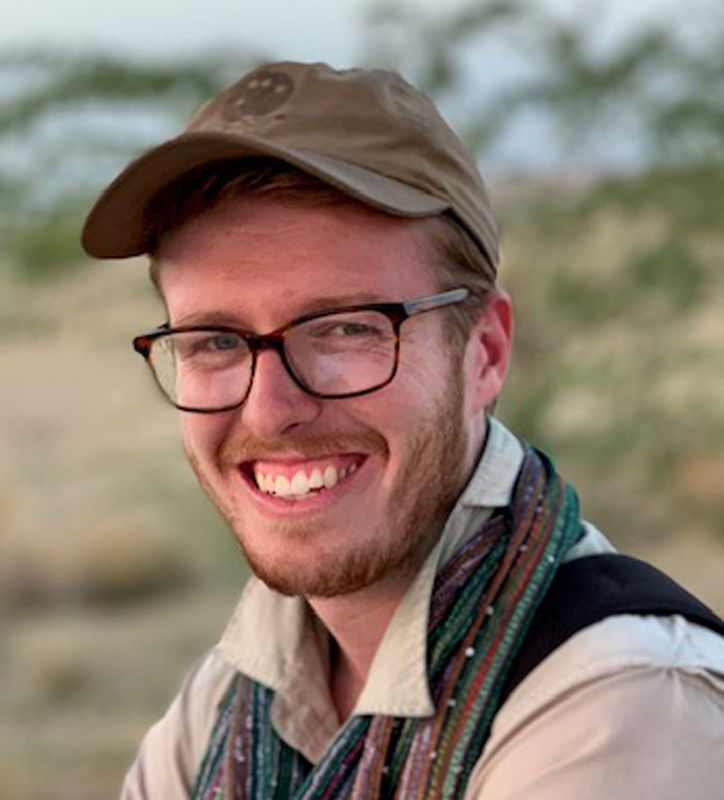
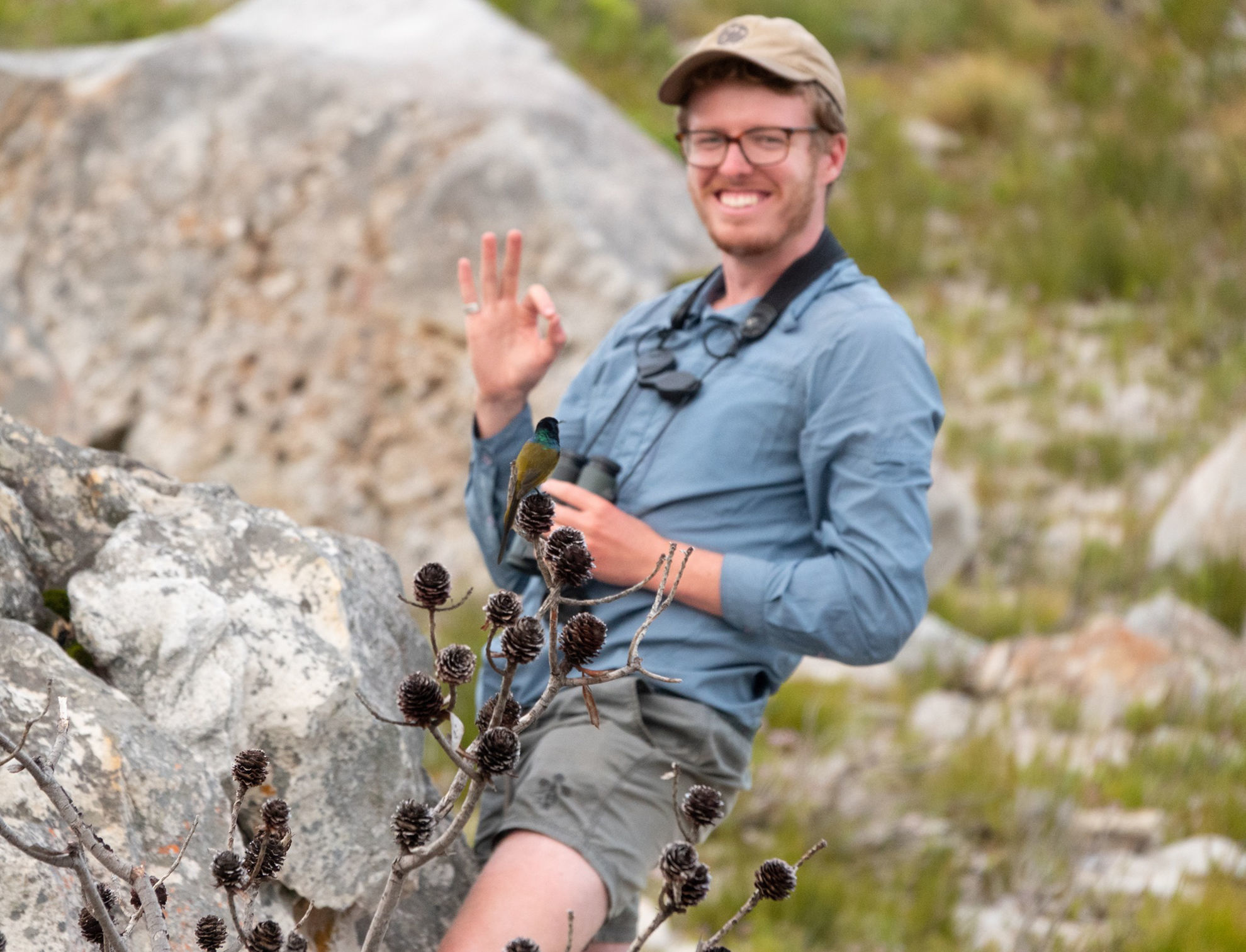
Yours truly, posing behind an Orange-breasted Sunbird, South Africa 2019
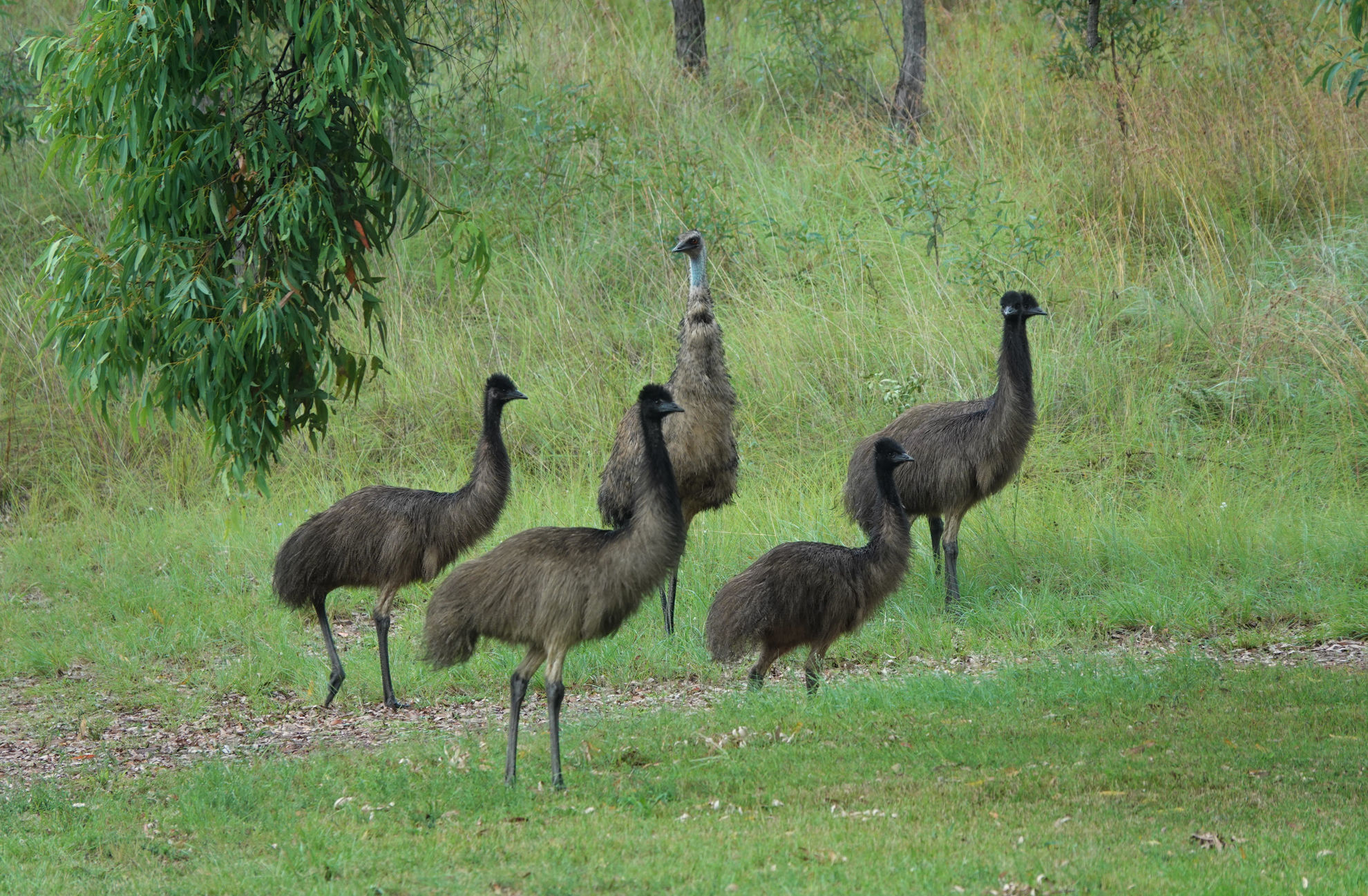
An old man Emu with his offspring that visited the house yard over several weeks © Max Breckenridge
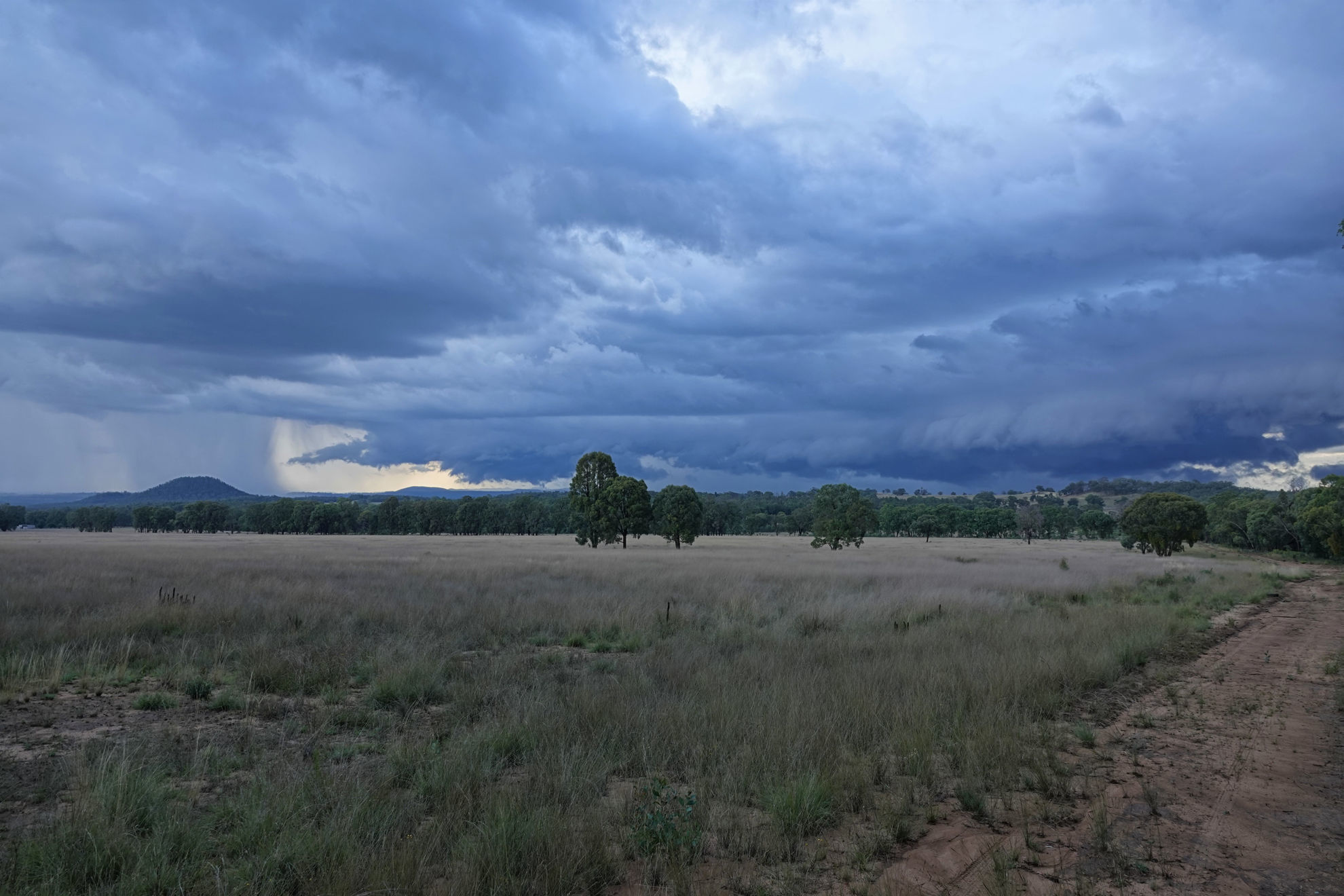
Storms rolling over the property where I live © Max Breckenridge
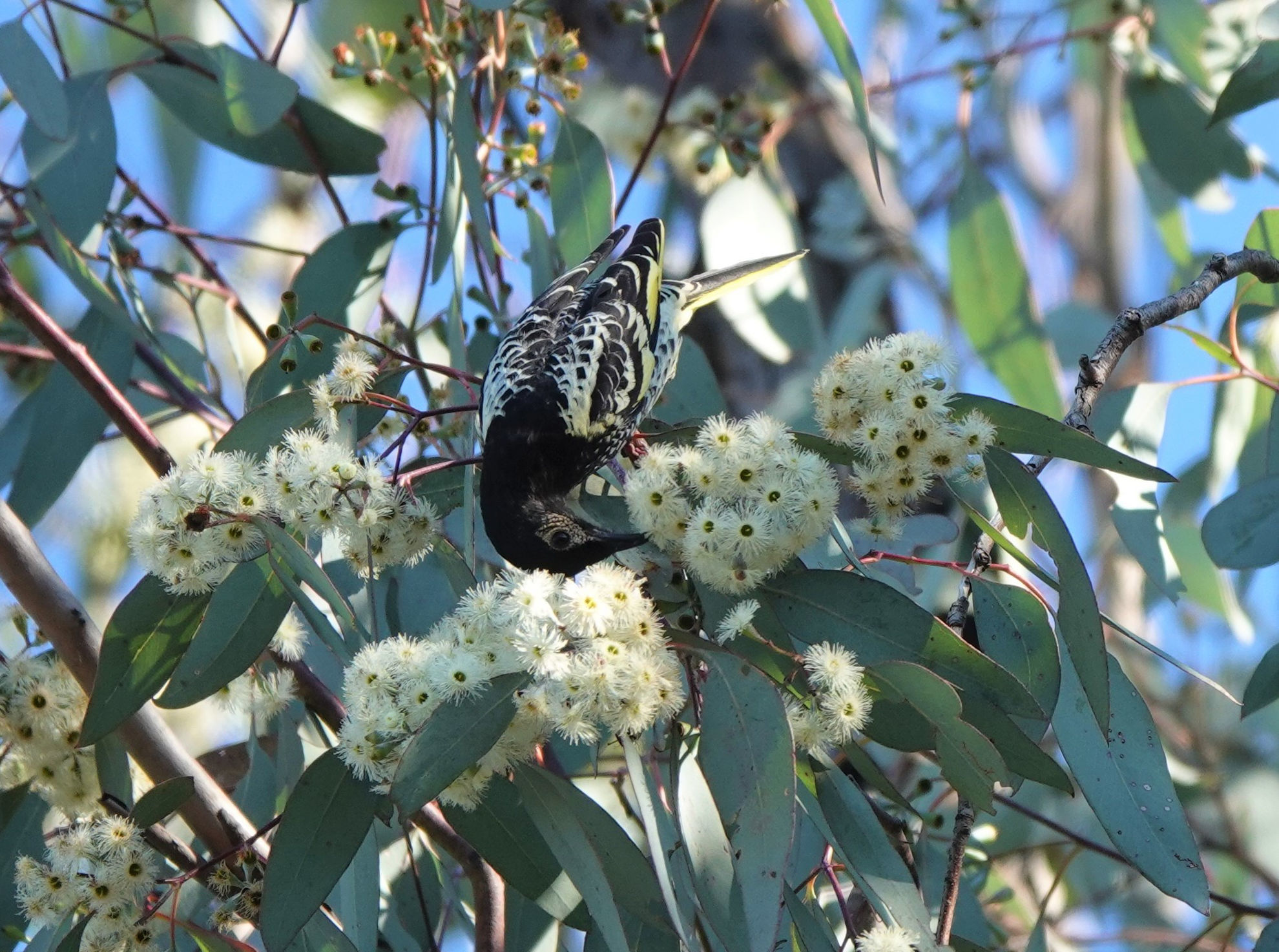
A critically endangered Regent Honeyeater consuming nectar (their main food source) from a Eucalyptus flower © Max Breckenridge
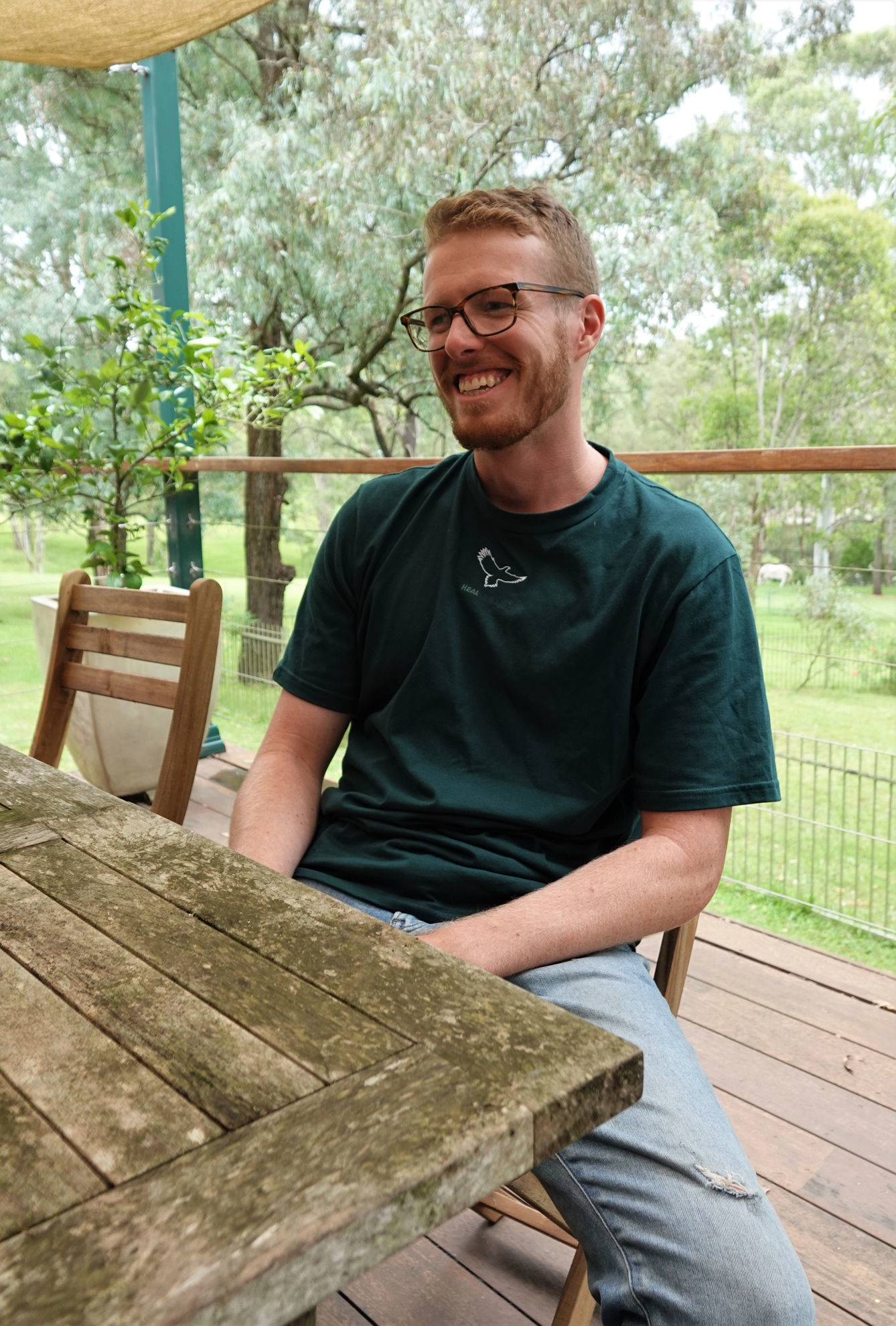
Max Breckenridge

A pair of reclusive Thick-billed Grasswrens I found during surveys in 2020 © Max Breckenridge
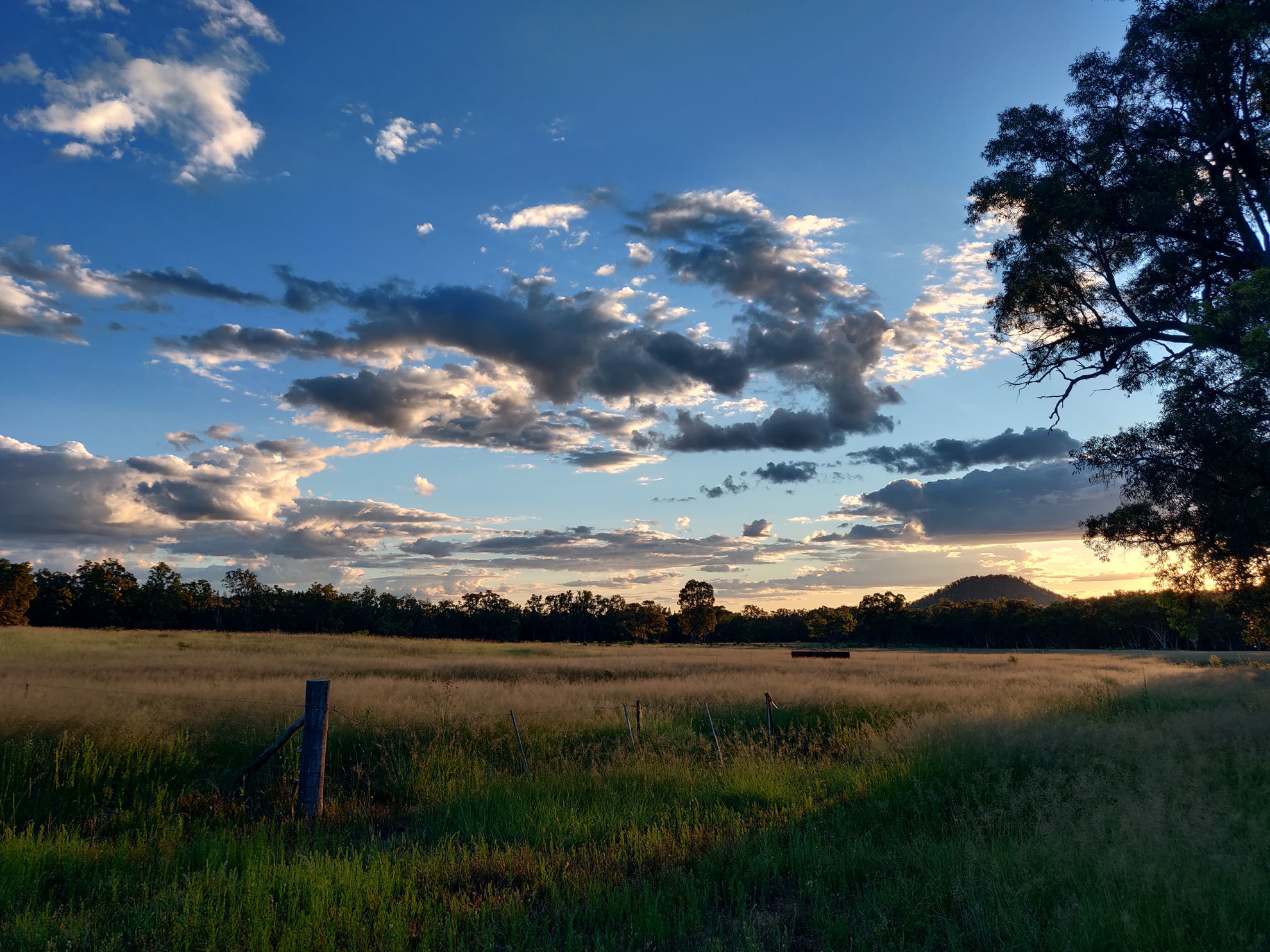
A sunset from home © Max Breckenridge
I first started guiding professionally in 2018 before being offered my dream job by Victor Emanuel the following year, alongside David James, Scott Baker, and veteran Dion Hobcroft as one of VENT’s growing list of leaders “down under.”
Australia is where I spend most of my time, having recently found my 700th species for the island continent. Sydney has been my home for the majority of my life, and it always feels just such after returning from any trip away. However, the pace of life and cost of living in Sydney now make it a much less desirable place for me to live. These days I live with my partner, Fernanda, a roughly two-hour drive north of Sydney, close to Lake Macquarie and the regional city of Newcastle. I am fortunate to live adjacent to bushland and just a short drive from the beautiful wet forests of the Watagans National Park.
Changing circumstances, early in 2021, facilitated a “tree-change” for me from the suburban bustle of Sydney to the forested isolation of my grandparents’ property in rural western New South Wales—a roughly five-hour drive from Sydney. Time there felt like a blessing. The new morning ritual of recording each species heard or seen while sipping the day’s first coffee allowed for a closer insight into the day-to-week changes of the local birds. I came to know the special feeling of living on the land and bearing witness to the changing of the seasons, albeit more subtle in temperate Australia than many other parts of the world. During this time living “out bush,” I witnessed what would be the last months of my grandfather’s life. The significance of being present during that time was not lost on me.
During the COVID inflicted hiatus from touring, I worked on projects for BirdLife Australia, and continue to do so when I can find the time. I was fortunate to be heavily involved with three significant releases of captive-bred and critically endangered Regent Honeyeaters. These were the first releases ever conducted in the state of New South Wales. My work involved tracking a proportion of the released birds, which had been fitted with radio transmitters. This allowed me and a small team to monitor their success over the weeks after their release from captivity. We had many firsts and failures over the two releases, but the future is now looking a little brighter for this enigmatic species, which numbers fewer than 300 individuals in the wild.
Another special project I was tasked with was investigating the presence of Thick-billed Grasswrens in far-west NSW. Grasswrens are an endemic family of Australian birds closely related to the gaudy and popular fairywrens, but they are their antithesis in many ways. Where fairywrens are typically bold and bright, grasswrens are the opposite. They inhabit remote and unforgiving terrain and actively avoid human habitation. To put this in context, the population of grasswren we were tasked with finding had only been rediscovered in 2008, and the population was estimated to be fewer than 20. Our work went well, and we managed to effectively double their population estimate within several weeks of searching.
It has been very rewarding to be a part of on the ground conservation efforts. It has given me a greater appreciation and respect for those who devote their lives to these efforts. As the insatiable global progress marches on, I see it as imperative that we all do our part to promote the significance of the natural world. Working for and traveling with VENT provides us all with an unrivaled opportunity to witness the beauty of our planet while playing an important role—sustaining and encouraging ecotourism and associated conservation efforts from Costa Rica to Papua New Guinea and everywhere in between.
Thank you for reading. I look forward to traveling with you in the future!
Upcoming Tours
December 27, 2025 - January 17, 2026Antarctica, South Georgia & the Falkland Islands February 15 - March 2, 2026
Cambodia March 29 - April 15, 2026
Bhutan July 11 - 26, 2026
Papua New Guinea Highlights July 26 - 31, 2026
Papua New Guinea: West New Britain August 14 - 27, 2026
Southwest Pacific: Fiji & Samoa August 27 - 31, 2026
Southwest Pacific: New Caledonia Extension September 10 - 21, 2026
Western Australia September 20 - October 6, 2026
Grand Australia Part I October 4 - 21, 2026
Grand Australia Part II December 4 - 20, 2026
India: Ganges River Cruise and Himalayas January 6 - 9, 2027
Antarctica: Buenos Aires Pre-trip January 8 - 29, 2027
Antarctica, South Georgia & the Falkland Islands March 26 - April 12, 2027
Bhutan May 1 - 21, 2027
Classic China: Sichuan Province June 7 - 22, 2027
Papua New Guinea Highlights June 23 - 29, 2027
Papua New Guinea: West New Britain July 18 - 31, 2027
Southwest Pacific: Fiji & Samoa July 31 - August 4, 2027
Southwest Pacific: New Caledonia Extension September 10 - 21, 2027
Western Australia September 20 - October 6, 2027
Grand Australia Part I October 4 - 21, 2027
Grand Australia Part II March 29 - April 15, 2028
Bhutan
- Past featured Tour Leaders -
David Ascanio
David Ascanio, a Venezuelan birder and naturalist, has spent over 39 years guiding birding tours throughout his native country, Colombia, Brazil, Peru, Costa Rica, the Orinoco and Amazon River basins, Trinidad & Tobago, Suriname, the Guianas, the Dominican Republic, Puerto Rico, the Lesser Antilles, Cuba, Chile, and Panama. He is especially interested in bird vocalizations and has a private library containing voices of more than 70% of all the birds of Venezuela. David combines superb birding skills with an astonishing command of bird vocalizations. He has published a book for children about bird songs and coauthored the descriptions of two new species, the Rio Orinoco Spinetail and the Delta Amacuro Softtail. David has also published numerous papers about the birds of the llanos (plains), Orinoco River Island species, and the pan-tepui endemic species on which he has become an authority. He is the senior author of the Field Guide to the Birds of Venezuela (2017). David is an excellent communicator, has a great sense of humor, and is tireless in helping others find birds and wildlife. These traits have made him one of the most popular naturalists/guides in the Neotropics.
Scott Baker
Max Breckenridge
Erik Bruhnke
Erik Bruhnke has loved birds since he was a child looking at chickadees. In 2008 he graduated from Northland College in Wisconsin with a Natural Resources degree. Erik taught field ornithology at Northland College for three semesters. Between 2009 and 2014, he spent his summers conducting field research focused on breeding bird transects in Upper Michigan, point counts for a breeding bird atlas in Minnesota and Wisconsin’s Northwoods, vegetation and breeding bird surveys throughout wind farms in North Dakota’s prairie potholes, and cavity-nesting surveys in the Cascade Mountains of Oregon. A devoted raptor nerd, he is drawn to hawkwatches. He worked as an interpreter for six seasons at Hawk Ridge Bird Observatory in Duluth, Minnesota; counted migrating raptors at the Corpus Christi HawkWatch in Texas in 2015; and was the 2016, 2017, and 2018 hawk counter at the Cape May Hawkwatch in New Jersey. Erik’s wildlife photography has won national awards, and he’s written for the American Birding Association’s Birder’s Guide, BirdWatching magazine, and Bird Watcher’s Digest. When not leading birding tours, Erik often leads field trips and speaks at birding festivals. He also enjoys hiking, kayaking, cross-country skiing, and just being out in the snow. In his free time he loves to cook and bake.
Rafael Galvez
Rafael Galvez has been birding and illustrating birds since childhood, a dual passion that developed when his family moved from Peru to South Florida. Always with a sketchpad in hand, he has traveled throughout the U.S., Latin America, and Eurasia in pursuit of birds. He served several years as a board member of the BirdLife International affiliate in the Republic of Georgia, developing educational and conservation programs. He gained knowledge of the Caucasus region while directing a series of records and documentary shorts on the ancient chants of the Georgian nation. During that period he also produced retrospective books and catalogs on the works of Russian realist painters. He has combined his love of art, education, and birds while collaborating in several publications, including a field guide to Raptors and Owls of Georgia (Caucasus), which he illustrated and coauthored. After working with raptor research along the Black Sea, he returned to South Florida to spearhead a new phase for the Florida Keys Hawkwatch migration monitoring project, where he has participated as director. As chair of citizen science and IBA monitoring at Tropical Audubon Society in Miami, he has reached out to underserved communities by providing opportunities for the greater appreciation of birds and Florida habitats. Currently, he lives in Homestead, spends much time in the Everglades, serves on the Florida Ornithological Society’s Records Committee, and is on the Leica Sport Optics Pro Staff. He loves sharing his passion for birds with audiences of all ages, and has been a guide and teacher for over 15 years. You can find some of his latest sketches and articles about painting in the field at his blog, GalvezBirds.com.
Brian Gibbons
Brian Gibbons grew up in suburban Dallas where he began exploring the wild world in local creeks and parks. Chasing butterflies and any animal that was unfortunate enough to cross paths with the Gibbons boys occupied his childhood. A wooden bird feeder kit sparked a flame that was stoked by a gift of the Golden Guide and family camping trips to Texas state parks. Thirty years ago Brian attended two VENT camps for young birders. Birds are now his primary interest, but all things wild continue to captivate him. After college, Brian undertook a variety of field biology research jobs that have taken him to the Caribbean, the Bering Sea, and the land of the midnight sun, arctic Alaska. He enjoys working with kids, hoping to spark environmental awareness through birds. For many years Brian’s field research has involved bird banding. His most amazing recoveries were a female Wilson’s Warbler that had been banded in Alaska and was captured by Brian in Colorado, and a Sooty Tern that perished after a hurricane on the Texas coast; it had plied the Gulf of Mexico and the oceans of the world for 24 years. Brian’s recreational bird-seeking has taken him to Machu Picchu in Peru, the Great Wall in China, the plains of East Africa, and the Himalayas in Nepal. Brian leads birding trips in the United States, Central America, the Caribbean, and Europe. As well as being a fanatical birder, he loves capturing birds with photography. He lives in Tucson, Arizona with his wife, Lacrecia Johnson, and their son, Grayson.
Paul Greenfield
Paul Greenfield grew up near New York City and became interested in birds as a child. He received his B.F.A. from Temple University, where he was a fine arts major at the Tyler School of Art. Since 1972, he has lived in Ecuador where his fascination for birds and art has culminated in the completion of 20 years of work illustrating The Birds of Ecuador (Cornell University Press, 2001), which he co-authored with Robert Ridgely. The Spanish version was published in 2006 and The Birds of Ecuador App was launched in 2018. Paul is also co-author of Birds of Western Ecuador, a Photographic Guide (Princeton University Press, 2016) with Nick Athanas. He has participated in the discovery of a number a new avian species to science and has painted several frontispiece illustrations of these newly described taxa. Paul is very involved in saving Ecuador’s avian diversity and important habitats through his involvement with various foundations, as well as working with and inspiring local governments and communities to get involved in the protection of “their” biodiversity as a pioneer and promoter of birding tourism throughout Ecuador. He was the lead author of Ecuador’s National Strategy of Bird Tourism (2006), and its Update (2010). He has been showing visitors the birds of this fascinating country for nearly five decades and has led many Ecuador bird tours. Paul and his wife, Martha, live in Quito.
Steve Hilty
Steve Hilty is the senior author of A Guide to the Birds of Colombia, and author of Birds of Venezuela, both by Princeton University Press, as well as the popular Birds of Tropical America, A watcher’s introduction to behavior, breeding and diversity. He has also written a number of scientific papers on birds and plants, has described two species of birds new to science in Venezuela, and another, with a team of scientists, in Colombia. He also wrote the text and species accounts for the tanager family for the acclaimed Handbook of Birds of the World, published by Lynx Press in Barcelona. In a departure from ornithology, Steve also wrote Dirt, Sweat, and Diesel: A Family Farm in the 21st Century, a book focusing on a Midwestern farm family. However, he returned to birds with his recent (2021) Birds of Colombia, published by Lynx Editions of Barcelona, Spain. Steve holds a Ph.D. in zoology from the University of Arizona and has worked at the Arid Lands Department at the University of Arizona, and as a broker with Merrill Lynch. He is currently a research associate in ornithology at the University of Kansas Biodiversity Institute. Since 1983 he has also worked for Victor Emanuel Nature Tours, guiding trips throughout North and South America, and co-leading trips to India, the Orient, and Australasian regions. With more than four decades of experience in South America and a wide range of natural history interests, he brings a unique breadth of expertise to his Neotropical tours. At night he often turns his binoculars towards the skies for stargazing. Steve lives in Kansas City with his wife, Beverly. They have two daughters.
Dion Hobcroft
Dion Hobcroft has been working for VENT since 2001. He has led many tours (more than 200) to Australia, New Guinea, New Zealand, Bhutan, Indonesia, India, China, Southwest Pacific, Philippines, Cambodia, Thailand, Malawi, Myanmar, Japan, Russia, Alaska, Tanzania, Uganda, Madagascar, Kazakhstan, Uzbekistan, and the Antarctic. In 2007, 2013-2019, and 2022–2025 alone, Dion showed more than 2,000 species of birds to VENT clients every calendar year. His informative, relaxed, and educational nature, combined with sharp eyes and ears, has established Dion as a favorite of many tour participants. His fieldwork for over 40 years on birds and other terrestrial vertebrates has allowed him to amass an extraordinary knowledge of the biodiversity in the Asia-Pacific region. Born in Tasmania and based in Sydney, Dion has traveled widely throughout Australasia, listing over 1,200 species, placing him in the top echelons of the region’s birders. He is very tuned-in to the songs of bird species in the Asia-Pacific region, and specializes in rare and elusive species. He is delighted to show these skulking rarities to his travel companions. Dion has published several papers on field ornithology, served on national and state rare bird committees, managed Birdline NSW, run introduction to ornithology courses for Sydney University, and, before he traveled so continuously, was a popular speaker with various natural history societies. Dion has worked for many research and government agencies ranging from the Antarctic Division, Department of Environment NSW, Agriculture Protection WA, Taronga Zoo, Australian Museum, and the Queensland Department of Primary Industry. Dion lives in Sydney with his wife, Lise, and two grown-up children, Grace (age 24) and Daniel (age 20).
Jeri Langham
Jeri M. Langham has a Ph.D. in plant ecology from Washington State University, and after 38 years as a professor of biological sciences at California State University in Sacramento, retired in May 2008. He received the first Outstanding Teacher Award from the newly formed College of Natural Sciences and Mathematics in 1997; the Outstanding Faculty Award from the Science Educational Equity and Minority Organization of Science Students organizations in 2005; and his University’s third annual Lifetime Achievement Award for Community Service in 2006. Jeri has ardently birded all over North America, as well as Mexico, Costa Rica, Panama, Venezuela, Ecuador, the Galapagos Islands, Peru, Brazil, Argentina, Kenya, Borneo, South Africa, Thailand, Cuba, and Australia. Born and raised in Venezuela, he speaks fluent Spanish. Known for his enthusiasm and boundless energy, Jeri thoroughly enjoys searching for birds and sharing them with others. His passion for teaching and his natural teaching abilities soon become apparent as his tour participants enjoy learning more about the biological world around them. Jeri is a former member of the California Bird Records Committee. He is a Founding Director and the Fundraising Director for the Neotropical Grassland Conservancy.
Geoff Lockwood
Geoff Lockwood's interest and involvement with birds dates back to his early years at school and forms part of a wider interest in the biodiversity of the Southern African sub-region. After leaving school, he began a career as a bird artist, illustrator, and author. In 1981, he published Garden Birds of Southern Africa and later also contributed half the illustrations to the 5th and 6th editions of Roberts' Birds of Southern Africa. Geoff is currently based at the Delta Environmental Centre in Johannesburg where he acts as part-time manager and education officer, working to instill an environmental ethos in teachers and school groups that visit the Centre. For the past 40 years he has been involved with local birding organizations and has served on the Council of the Southern African Ornithological Society—now BirdLife South Africa, for most of that time. He travels widely in the region, presenting lectures, talks, and courses on bird identification, ecology, and behavior, and was also involved in the training of local bird guides as part of a BLSA initiative to give communities a vested interest in the conservation of their local birds. With 874 species listed within southern Africa, Geoff is amongst the region's top birders. He has led tours to many destinations in Southern and Central Africa, as well as Kenya and Israel.
Brad McKinney
Brad McKinney began birding during the winter of 1987–88, an exciting year in which many Mexican rarities were recorded in South Texas. His passion for birds has led to numerous birding trips and photography expeditions across North America, Mexico, Central America, and Hawaii. Brad loves pelagic birding and has guided Texas pelagic trips since 1995, many from his home town of South Padre Island. He has been a longtime tour leader at the Rio Grande Birding Festival and has led birding trips across Texas and Mexico. Brad has served on the Texas Bird Records Committee for six years and co-authored A Birder’s Guide to the Rio Grande Valley. He received his degree in biology at the University of Texas at Austin and a master’s degree in marine ecology at the University of Texas at Brownsville. Brad’s other interests include nature photography, surfing, and snowboarding with his son, Will. He lives at South Padre Island with his wife, Janette, and their dog, Sam.
Brennan Mulrooney
Michael O'Brien
Michael O’Brien is a freelance artist, author, and environmental consultant living in Cape May, New Jersey. He has a passionate interest in bird vocalizations and field identification, and a serious addiction to migration and nocturnal birding. His travels have taken him throughout North and Central America and beyond. At home in Cape May, Michael serves as an Associate Naturalist with Cape May Bird Observatory for whom he conducts numerous workshops, and, for many years, conducted a fall songbird migration count. He is co-author of The Shorebird Guide, Flight Calls of Migratory Birds, and America’s 100 Most Wanted Birds, and is primary author of Larkwire, an online and handheld application for learning bird sounds. His illustrations have been widely published in books and field guides, including the National Geographic Field Guide to the Birds of North America and the new Peterson field guides. Michael also has an intense interest in butterflies, leads several “Birds & Butterflies” tours with his wife, Louise Zemaitis, and is coordinator of the Cape May Butterfly Count.
Doris Valencia
Andrew Whittaker
Rick Wright
UPCOMING EVENTS:
Fyke Nature Club, Nomadic Birds and Their Stories, A Zoom Lecture, January 23, 2026, 8:00 pm EST.
Louise Zemaitis
Kevin Zimmer
Kevin Zimmer has authored three books and numerous papers dealing with field identification and bird-finding in North America. His book, Birding in the American West: A Handbook, deals with finding and identifying birds in the western United States. Living in Alaska contributed to his affection for the Far North, where he has anchored VENT’s tour program since 1986. For the past 30+ years he has concentrated his attention on the Neotropics, particularly on Brazil, Costa Rica, Panama, Peru, and Venezuela. He has directed VENT’s Brazil program since 1991. In the past decade, he has rekindled a love affair with the birds and wildlife of Africa, an interest that began as a young boy (watching Marlin Perkins on Mutual of Omaha’s Wild Kingdom), but which blossomed with his first trip to Kenya in 1987 and leading several tours there through 1998. Following his return to Africa after a hiatus of more than a decade, his yearly tours to Africa have taken him to Tanzania, Uganda, and Ethiopia. Kevin has a PhD in biology (research emphasis in Avian Evolutionary Ecology) from New Mexico State University, and is a Research Associate of the Los Angeles County Museum of Natural History, an elective member of the American Ornithologists’ Society (AOS), and a member of the A.O.S. South American Classification Committee (SACC). He formerly served two terms on the American Birding Association (ABA) Check-list Committee, and is a regular contributor to Cornell’s Macaulay Library of Natural Sounds. He has authored numerous technical papers on the taxonomy, distribution, and behavior of Neotropical birds, particularly those of the Amazon Basin. In 2003 he completed (with co-author Mort Isler) the major chapter on the Thamnophilidae (antbirds) for the prestigious Handbook of Birds of the World series. In 2006, he and Curtis Marantz coauthored a six-CD compilation of Bird Voices of Alta Floresta and Southeastern Amazonian Brazil (produced by the Cornell Laboratory of Ornithology’s Macaulay Library of Natural Sounds) that represents the most comprehensive set of commercially available bird recordings for any part of the Amazon Basin. He and Andrew Whittaker are currently at work on a comprehensive field guide to the birds of Brazil, to be published by Princeton University Press. Kevin lives in Atascadero, California with his wife, Susan. Their daughter, Marina, is a licensed Marriage and Family Therapist (MFT). She and her husband, Ryan, and their children, Brinn and Clayton, are now living in Napa, California.
Barry Zimmer
Barry Zimmer has been birding since the age of eight. His main areas of expertise lie in North and Central America, but his travels have taken him throughout much of the world, including such exotic locales as Japan, Russia, Madagascar, Africa, and New Zealand. Barry is a longtime member of the New Mexico Bird Records Committee, and served on the Texas Bird Records Committee for 12 years. He has co-authored three books: Birds of the Trans-Pecos, A Birder's Guide to the Rio Grande Valley, and Birds and Birdfinding in the El Paso Area. Barry has a keen interest in nature photography, having captured over 1,600 species of birds on film. His other interests include sports (a diehard Red Sox fan), cooking, and movies. He received his degree in psychology at the University of Texas in El Paso. Barry resides in El Paso with his wife, Yvonne, and their daughter, Alexandra.

Victor Emanuel Nature Tours
2525 Wallingwood Drive
Suite 1003
Austin, TX 78746
Toll Free: 800.328.8368
Phone: 512.328.5221
Fax: 512.328.2919
Email: info@ventbird.com
